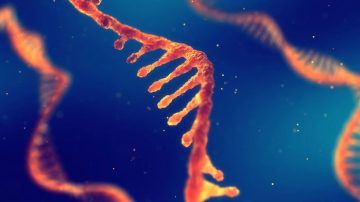Robert F. Service in Science:
 Sugar isn’t just for sweets. Inside cells, sugars attached to proteins and fats help molecules recognize one another—and let cells communicate. Now, for the first time, researchers report that sugars also appear to bind to some RNA molecules, the cellular workhorses that do everything from translating DNA into proteins to catalyzing chemical reactions. It’s unclear just what these sugar-coated RNAs do. But if the result holds up, it suggests vast new roles for RNA.
Sugar isn’t just for sweets. Inside cells, sugars attached to proteins and fats help molecules recognize one another—and let cells communicate. Now, for the first time, researchers report that sugars also appear to bind to some RNA molecules, the cellular workhorses that do everything from translating DNA into proteins to catalyzing chemical reactions. It’s unclear just what these sugar-coated RNAs do. But if the result holds up, it suggests vast new roles for RNA.
The report, posted to the preprint server bioRxiv on Monday, drew immediate Twitter responses verging on the hyperbolic: “a new era is starting!!” wrote one scientist. “A brilliant example of how collaboration … can alter the face of biochemistry as we know it!” wrote another. “This is a mind-blowing result,” tweeted a third. Asked by Science for comment, scientists were somewhat more measured. “This is a profound observation that nobody anticipated,” says Mark Lehrman, a pharmacologist at the University of Texas (UT) Southwestern Medical Center in Dallas who was not involved in the work. That profound observation still spurs caution: Others aren’t yet convinced about the basic findings.
The notion that RNAs might be modified by other molecules isn’t new. Chuan He, an RNA chemist at the University of Chicago in Illinois, notes that researchers have observed some 170 different chemical modifications to RNA—a methyl group here or an acetyl group there—that, among other functions, make sure RNA winds up in one cellular compartment or another. But until now, no one had seen complex sugars modify RNAs.
More here.
